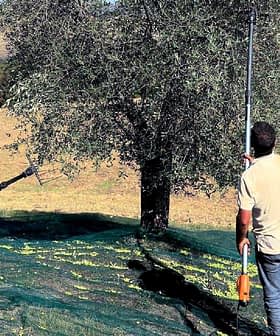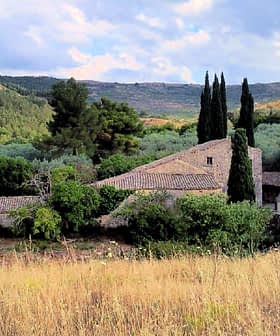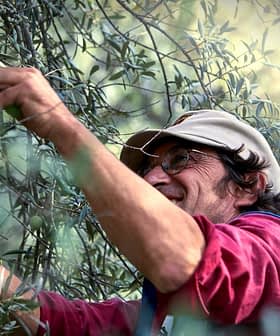
These are the days when olive harvest in Italy — and in all the Mediterranean area where the clever early-picking habit gained ground — is really getting going, despite the unfavorable weather conditions with heavy rains and hailstorms impeding or slowing down the work.
The weather was sunny and warm all along the country until two weeks ago and the blossoming was excellent: this lead many to forecast a very good year for Italian olive oil, hopefully not to be ruined by the excessive rainfalls and cold.
It will be necessary to wait some more weeks for the official estimate and appraisal but we can already take note of a peculiar and interesting trend in the 2013 harvest in Italy: many producers – both those who already bottled their oil, and those who are now starting to pick the olives – are using the web and the main social media to communicate and share the work in progress of the harvest and its valued outcome.
Frantoio Gaudenzi, a family-run oil mill in Umbria producing excellent extra-virgin olive oils, just released its brand new Quinta Luna (the company’s top label, an intense and powerful blend of Frantoio, Moraiolo and Leccino). This year they decided to launch it organizing a “Quinta Luna Day” when ten selected Italian restaurants proposed a special menu or recipe created to honor the product and to enhance its features, starting from the old favorite, traditional bruschetta with toasted bread and freshly milled Quinta Luna.
As the youngest members of the family, Stefano and Andrea, who lately joined the family business, decided to implement the company’s presence on Facebook and Twitter to launch the event with a photographic contest: the Gaudenzi’s fans could take a picture featuring a dish, or even themselves, with the Quinta Luna bottle to show their passion for this extra-virgin olive oil, hopefully sharing their recipes, too.
Olio Flaminio, another oil mill and producer from Umbria that in 2012 launched the #evolover hashtag on Twitter, also chose to use Pinterest to narrate the farm’s activities and especially the harvest, with a countdown to the olive picking that started on the 8th October.
Also Parco dei Buoi, the mill and farm in Molise run by Francesco Travaglini — one of the first Italian growers to use the Internet launching the “2.0 farmers” project — decided to publish online the work in progress harvest of the olives for the Tratturello, the elegant and well balanced blend of Gentile di Larino and Leccino olives. The aim of the teevo.it website is to present a virtual “shared harvest” to let everyone know the strain and effort that lay behind a bottle of extra-virgin olive oil, setting up “the first olive grove of the Web.”
The Tratturello bottle itself — in a cartoon style — will tell everything about the picking process quoting data about the different olive varieties and their output, the sensorial and organoleptic evaluations, and the chemical analyses made day by day. The same information will be also accessible through a QR code on the label. Also at Parco dei Buoi, the harvest — due to start on the 4th October, the day devoted to St. Francesco d’Assisi according to tradition — was delayed to the 8th and went on in the rain, giving 11 liters of extra-virgin olive oil per every 100 kilos on the first day.
In the meantime, another hashtag (and a dedicated blog) appeared in Twitter lauched by the @EDTlibri account: #extraverginita. The independent publishing company — also publishing the Lonely Planet guides in Italy — just released the well-known investigative book Extra Virginity by Tom Muller. Even tough the book had been widely set and conceived in Italy, it had been originally published in English and then translated into German, Portuguese, Japanese and other languages, but it is only now available in Italian.








